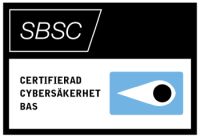Day 1
Chapter 1: Course Introduction
Chapter 2: Network Design Fundamentals
– A Need for Design
– Knowledge is King
– A Proposed Design Methodology
– A Reference Network
Chapter 3: Understanding Customer Requirements
– RFP Requirements
– Scoping the Design Project
– Analyzing the Data
– Lab: Understanding Customer Requirements
Chapter 4: Organizing the Data
– Processing the Data and Requests
– Understanding Boundaries and Scope
– Design Proposal Considerations
Chapter 5: Securing the Network
– Why Secure the Network?
– Security Design Considerations
Day 2
Chapter 6: Creating the Design—Campus
– The Campus Network: An Overview
– Best Practices and Considerations
– Architectural Design Options
– Lab: Creating the Design—Campus
Chapter 7: Creating the Design—Wide Area Networks
– The WAN: An Overview
– Best Practices and Considerations
– WAN Design Examples
– Lab: Creating the Design—WAN
Chapter 8: Creating the Design—Data Center
– The Data Center: An Overview
– Best Practices and Considerations
– Data Center Design Examples
– Lab: Creating the Design—Data Center
Chapter 9: Business Continuity and Network Enhancements
– Business Continuity Planning
– High Availability Design Considerations and Best Practices
– Offerings and Solutions
– CoS and Traffic Engineering Considerations
– Environmental Design
Day 3
Chapter 10: Network Management
– Designing for Network Management
Chapter 11: Automation
– Designing for Network Automation
– Lab: Enhancing the Design
Chapter 12: Putting Network Design into Practice
– Network Design Recap
– Responding to the RFP
– Final Lab Introduction
– Lab: Putting Network Design into Practice
Appendix A: Network Migration Strategies
– Migration Overview
– Migration Approaches
– Migration Examples
Appendix B: Sample Campus Designs
– Campus Topology Examples
Appendix C: Sample Response to RFP
– Example of an Actual Juniper Networks RFP Response








Recensioner
Det finns inga recensioner än.